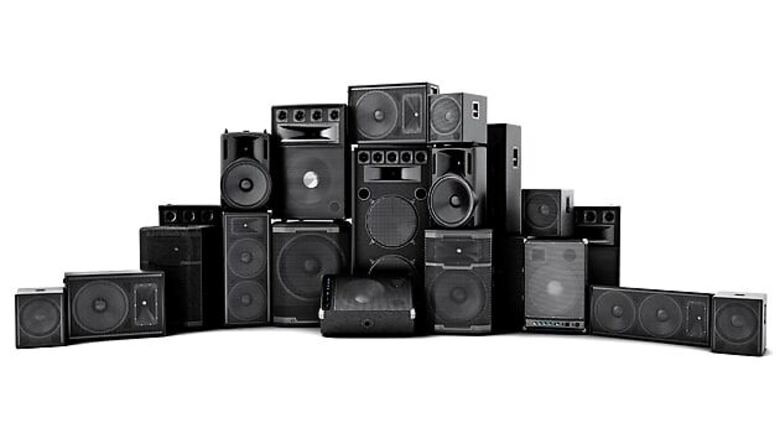
views
Indisputably, the best way to test a speaker before you buy one is to listen to the sound it produces. But then this is not always possible, particularly in this age of online shopping and even if you plan to buy one from a brick and mortar retailer - many don't have demo units and can refuse to unpack a sealed package until the purchase is completed.
It is where the speaker specifications come to the rescue. But then not everyone can comprehend what those numbers and symbols stand for. Here's a ready reckoner, that we believe could help you in choosing the right speaker.
1. Sensitivity: Measured in dB (decibels), it is one of the most significant albeit ignored, speaker specifications. A speaker's sensitivity indicates the loudness of a speaker - in either a non-echoing environment or a room environment. Some manufacturers specify the sensitivity measured in an average room environment, while others take into consideration a non-reverberant environment while measuring it. (Sensitivity measured in room environment will have results inflated by 2 to 3 dB over a non-echoing environment.)
The higher the sensitivity rating, the louder your speaker is. An average speaker comes with a sensitivity of around 87 dB to 88 dB. A speaker with a sensitivity rating over 90 dB is considered excellent.
Wondering how much 87 dB or 88 dB is? Here are a few common sounds (with their decibel ratings) that will help you understand how loud 87 dB is:
If silence is 0 dB, then
A Whisper: 15-25 dB
Home/office background noise: 40-60 dB
Normal speaking voice: 65-70 dB
Lawnmower: 90 dB
Car horn: 110 dB
2. Impedance: Impedance = Resistance. Measured in ohms, this is another critical specification that you should take a note of.
To understand what impedance means, think of a speaker as a hose and water that flows through it as electric current (audio signals). [It is the current (that flows) that is converted into the sound produced by a speaker.]
If a hose has a narrow opening (high resistance), less water will flow through it, and if the hose has a bigger opening (low resistance), more water will flow through it.
Similarly, if a speaker has low resistance (impedance), more current (flowing from your amplifier) will pass through the speaker and vice-versa. Therefore, the lower the impedance, the more current flows through the speaker.
Remember: Low impedance = Large flow. High impedance = Small flow.
Now, the question is should you buy a speaker with high impedance or low impedance?
Your speaker should neither have high impedance nor low. If it has low impedance (less resistance/large flow), it will put load on your amplifier by asking it to push more current - which your amplifier may not be capable of. In its unnecessary attempts to drive more current, the amplifier may overheat and shut down or get damaged.
So does it mean higher impedance is better? No. Because a speaker needs a fair amount of current to play loudly. And high impedance = low flow of power = low volume.
Therefore, your speaker should have neither low nor high Impedance. It should have an optimum impedance.
A speaker with 6-8 ohms impedance rating is considered optimum. Speakers with an impedance rating in this bracket play safely to enjoyable levels.
3. Frequency Response: It is sometimes mentioned as frequency range and is measured in Hertz (Hz). This specification in a speaker tells how low and high a speaker can play. It is mentioned as "XHz-XkHz" - where X is a number.
Let's take a hypothetical figure: 65Hz-20kHz. The number at the lower end i.e.,"65Hz" here represents the bass output which means how low a speaker can play. The lower the number, the deeper the bass. And 20kHz (20,000 Hz) represents the highest treble.
It is said that the human ear can hear between 20Hz and 20kHz. But, practically, bass frequencies below 30Hz are less heard and more felt.
Therefore, any speaker that reaches 50 Hz or lower is considered good and is not required to be teamed with a subwoofer until you really want to hear the deepest bass.
Make sure that there is always a "+/-" after the frequency response rating. If the "+/-" deviation is absent, then this spec doesn't reveal the true picture.
Speakers usually come with a +/- 3 dB or +/- 4 dB rating after the frequency range. For example, A speaker has a frequency response of "40Hz-20kHz +/-3 dB". The "+/- 3 dB" indicates that every tone that the speaker produces will be within 3 dB of any other sound in the entire frequency range. Which means that your ears won't miss even the little sounds.
4. Power Handling: Specified in Watts (W), the power handling specification of a speaker indicates how much power a speaker can bear without causing any damage. Your speaker may get damaged if it gets the amount of power more than what is mentioned.
Speakers usually come with two power ratings - RMS or continuous, and Peak.
The RMS rating defines the continuous power a speaker can handle without getting destroyed, whereas the Peak power rating implies the maximum amount of power a speaker can bear in an instant. This peak rating, however, is of no use in practical application.
You must understand one thing that speaker ratings, sometimes, are misleading. Chances are that you may believe that a speaker advertised as 10 watts will play louder than the one with 7 watts of power rating. But here you don't know whether these ratings are in RMS or peak watts. So, make sure that your speaker has power ratings mentioned in RMS to make a true comparison.
5. Signal-to-Noise Ratio (SNR): The sound that a speaker produces includes some level of noise.
In other words, audio signals are sent to a speaker which are then converted into the sound (via internal driver movements) that we hear. But the sound that we hear are not purely audio signals that a speaker gets, in fact, it also includes some level of noise. This noise is added by internal components of the speaker/device.
Therefore, this spec describes how much noise is there in the output (sound that we hear) of a device in relation to the signal level. It is also expressed in decibels (dB).
So if a speaker has 120dB of Signal-to-Noise Ratio, it means that that the level of the audio signal is 120dB higher than the level of the noise. The higher the number, the better it is.
6. Speaker size: This is more of a hint that a true indicator. It is believed that bigger and heavier speakers sound better than small and lightweight ones.
7. Speaker cabinet: A good speaker in a bad cabinet may spoil the experience. Therefore, the quality of the cabinet also matters when buying a speaker. Ensure that your speaker is made of dense material, such as wood, as the light material vibrates the sound produced by the speaker. Though, it barely has any affect on the highs, but it does affect the bass.
This does not mean that your speakers should have a wooden cabinet. They, instead, should have a cabinet made of dense material.
Well, the specs of a speaker can give you more than an idea about its performance, but how well it performs in real world depends on the quality of its drivers, cabinets and other significant components.
So, my advice would be shortlist a few speakers based on the aforementioned specs and see if you can get to listen to its sound. If yes, good, else opt for the second best option - follow where the specs lead you to. Happy listening.




















Comments
0 comment